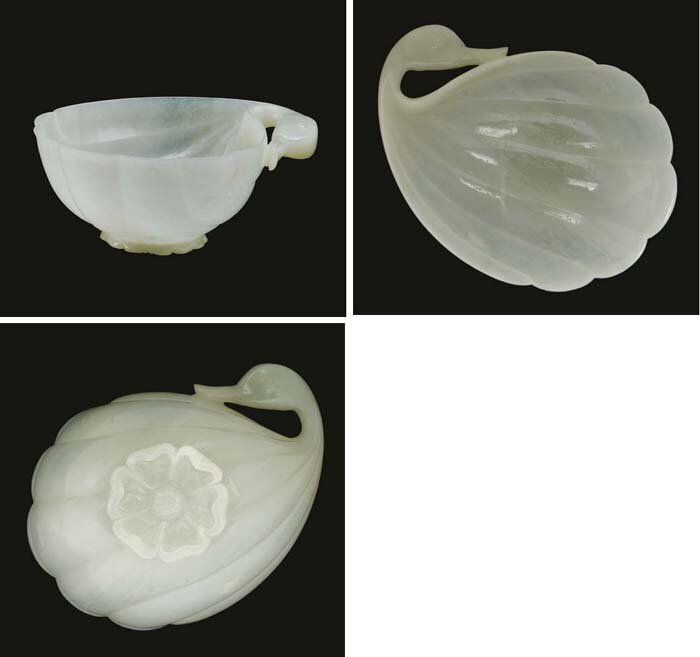Conspicuous consumption
Wine Cup of the Mughal Emperor Shah Jahan, White Nephrite Jade, 1657. Collection of the Victoria and Albert Museum.
I'm not sure when it became socially unacceptable to drink wine out of anything other than wine glasses (although the rule is being relaxed in some circles). I'm told that the wine glass as it exists today came into being in the mid 1600s, but until not so long ago, the people who know about these things scoffed at the idea that the shape of a glass affects the taste of the wine in it.
As long as we're considering alternatives, why not consider the wine cup as designed by the great Mughals of India?
After all, if connoisseurship of wine is associated with conspicuous consumption, why not be as obnoxious as you can about it?
Mughal Wine Cup of Jade, Rubies and Emeralds Set in Gold, 18th Century. Collection of the Musée Guimet.
And the Mughal wine cups are exquisite.
The Mughal wine cup was made of jade, not glass (although some European observers who had never encountered jade before mistook the material for marble). Jade was thought to possess many wondrous powers, including ensuring victory on the battle-field, preventing stomach-aches and heart-attacks, and neutralising poison.
The shape of the cup recalled a gourd dried out to act as a container and was perhaps inspired by Chinese models from the Ming period (1368-1644). The wide mouth probably didn't do much to concentrate the aroma of the wine, but it certainly made it easier to mix the wine with a hit of opium, just like the Mughals liked it.
Most people associate jade with Chinese culture, but in fact the Mughals were great jade lovers too.
A Mughal-Style White Jade Cup Belonging to the Qing Emperor Qianlong, 1783. Source: Christies.
Like the Chinese, the Mughals sourced their jade from the ancient kingdom of Khotan, an oasis in the Taklamakhan desert of Central Asia. Emissaries from China and India would often exchange gifts of exquisite jade ornaments, and each would be spurred on to greater artistic heights by the achievements of the other. The Qing emperor Qianlong was a great admirer and collector of Mughal jades, comparing their diaphanous quality to the wings of a grasshopper.
Source:
Amina Okada in L'Inde des Princes, 2000


